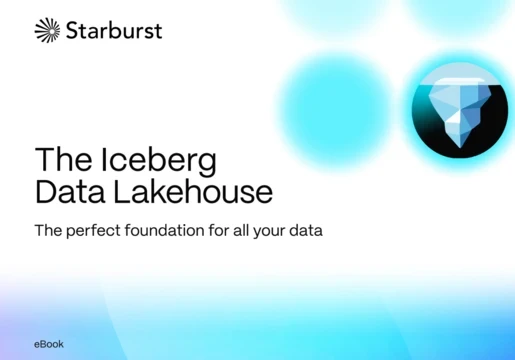I've seen this story too many times. Your CI/CD pipeline technically works—it builds code, runs tests, deploys applications. But it's painfully slow. Unreliable when you need it most. Developers complain about it constantly.
Here's the kicker: we've built these elaborate automation systems that somehow make deployment harder than the old days of manual releases.
Everyone talks about faster delivery cycles and shorter feedback loops. CI/CD is supposed to be the foundation of modern software development. But GitLab's 2024 DevSecOps Report reveals a brutal truth: 70% of organizations claim to have CI/CD in place, yet only 24% can actually deploy to production on demand.
That's not a tooling problem. It's a pattern problem.

The Hidden Velocity Killers: CI/CD Anti-Patterns That Sabotage Success
1. The Monolithic Monster: Pipelines That Attempt Everything
Picture this: every commit triggers a 45-minute pipeline that runs unit tests, integration tests, end-to-end tests, security scans, performance benchmarks, and deployment scripts. In sequence. Because "comprehensive testing" sounds responsible.
It's not. It's pipeline abuse.
Monolithic pipelines create cascading failures where a single flaky test can block an entire release. They discourage frequent commits because nobody wants to wait an hour for feedback. They turn CI/CD from a velocity multiplier into a bottleneck.
The fix requires surgical precision:
Pipeline decomposition becomes your best friend—break builds into logical stages (linting, unit tests, integration, deployment) that can run independently
Conditional execution saves precious minutes—use if logic in GitHub Actions or GitLab CI to skip unnecessary steps
Matrix builds parallelize work across multiple environments simultaneously
Teams with fast pipelines (under 10 minutes) deploy twice as frequently as those with slow ones.
The correlation isn't coincidental. Speed breeds confidence. Confidence breeds frequency. Frequency breeds better software.
2. The Security Nightmare: Hardcoded Secrets Everywhere
Credentials scattered through pipeline configurations like digital landmines. API keys committed to version control. Database passwords embedded in deployment scripts. It's an security disaster waiting to happen.
Yet it's disturbingly common.
The solution demands architectural discipline:
Secrets managers (HashiCorp Vault, AWS Secrets Manager) become non-negotiable infrastructure
CI-native tools like GitHub Actions Secrets, GitLab CI Variables, or CircleCI Environment Variables provide secure, accessible alternatives
The statistics are sobering: GitGuardian discovered over 10,000 leaked secrets daily in public GitHub repositories during 2023.
Every exposed credential represents a potential breach. Every hardcoded password is a security vulnerability disguised as convenience.
3. The Feedback Void: When Failures Scream Into Silence
Pipelines fail. That's not the problem—failure is information. The problem is what happens next: nothing. Failed builds sit in queues, generating alerts that get ignored, creating noise instead of actionable insights.
Meaningful feedback requires intentional design:
Contextual alerts to Slack or Teams that explain why things failed, not just that they failed
Failure analytics capabilities (flaky test detection in Jenkins, GitHub Actions) that identify patterns
Mean Time to Recovery (MTTR) tracking as a critical KPI
DORA research reveals the performance gap: elite teams restore service in under an hour, while low performers need a week or more.
The difference isn't talent. It's systems thinking applied to failure recovery.
4. The E2E Trap: End-to-End Tests on Every Commit
End-to-end tests are seductive. They provide comprehensive coverage, catch integration issues, and feel thorough. They're also slow, brittle, and expensive to maintain.
Running them on every commit is pipeline suicide.
Strategic test orchestration demands hierarchy:
Reserve E2E for merges or nightly builds where comprehensive validation makes sense
Contract testing (tools like Pact) validates service interactions without full system deployment
Mocked integration tests catch issues earlier in the development cycle
Google's internal testing philosophy embraces the "test pyramid"—unit tests form the foundation, integration tests provide the middle layer, and E2E tests cap the structure sparingly.
This isn't about avoiding comprehensive testing. It's about testing comprehensively at the right time.
5. The Ownership Bottleneck: CI/CD as Sacred Knowledge
When only DevOps engineers or release managers understand the pipeline, it becomes a single point of failure. Changes require tickets, approvals, and specialized knowledge. Development velocity grinds to a halt.
Democratic pipeline ownership transforms delivery:
"Paved road" platforms provide reusable templates and shared workflows that teams can adapt
Self-service capabilities empower developers to modify CI/CD definitions through versioned YAML files
Collaborative ownership distributes knowledge across teams rather than concentrating it
Companies like Netflix and Shopify publish extensive playbooks on democratizing pipeline ownership, treating it as a competitive advantage rather than operational overhead.
The goal isn't chaos—it's informed autonomy.
Elite Performance: What High-Velocity Teams Do Differently
DORA's Four Key Metrics illuminate the performance gap between elite and struggling teams. Elite performers don't just deploy faster—they deploy better.
They achieve on-demand deployment multiple times per day. Their change failure recovery time stays under one hour. Their failure rates remain below 15%. They lead with automation-first principles and bake observability into every pipeline stage.
Most importantly, they treat CI/CD as a product, not a collection of scripts. They prioritize developer experience, test reliability, and fast feedback as competitive advantages rather than operational afterthoughts.
The Path Forward: Building Pipelines That Actually Work
CI/CD represents more than toolchain configuration—it's an evolving practice that shapes how organizations deliver software. Avoiding anti-patterns isn't just about technical optimization; it's about creating sustainable, scalable delivery systems.
If your team battles slow pipelines, flaky tests, or deployment delays, the solution probably isn't better tools. It's better patterns.
Make pipelines observable and debuggable.
Eliminate friction points systematically.
Treat every failure as a learning opportunity.
Remember: the best CI/CD pipeline is the one developers trust completely and barely think about. Everything else is just elaborate automation theater.







Comments ( 0 )